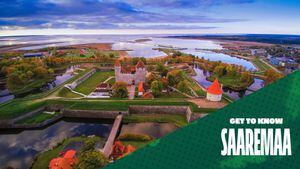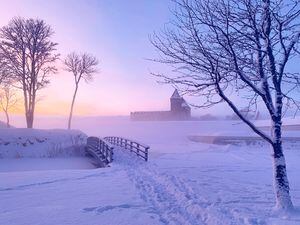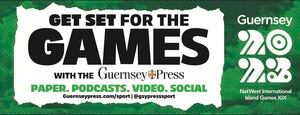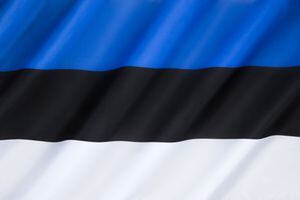Island Games: Get to know... Saaremaa
‘You can imagine, when athletes from Saaremaa were competing in our first Island Games in Aland in 1991, when they saw the national flag of Estonia being raised during the medal ceremonies – at a time when Saaremaa and Estonia were still part of the Soviet Union – well, this is something special that will always stay with us.’

Anu Vares’ summary of the importance of the Games to her and her fellow islanders rings particularly true when coming from someone who first competed here in Guernsey in the Games of 2003.
‘I love Guernsey,’ she told us. ‘ I have fond memories of winning gold in the discus, so bring on the games.’
She rather modestly does not expand on her dominant performance at Footes Lane on Friday 4 July of that year, when she threw 41.54m – half again as far as her nearest competitor.
A member of the executive committee of the International Island Games Association since 2005, Anu's enthusiasm for the event is matched by her enthusiasm for her island.
‘Saaremaa is one of the best places to live,’ she said.
‘It’s a very popular tourist destination, for tourists from Estonia and abroad, where we have all four seasons, from snow in winter to 30C in the summer.’
Saaremaa is 43 times bigger than Guernsey but has only about half the population.

Nevertheless, the sparsely-populated island – nestled between Estonia and Latvia and almost separating the Gulf of Latvia from the Baltic Sea – still manages to make its way in the world in terms of its economy, its sporting prowess and its arts scene.
A diversified economy heavily features tourism but also includes boat-building and food and beverage production and processing.
Saaremaa’s capital Kuressaare will host its annual opera festival from 25 July, opening with a production of Puccini’s Turandot. All performances are played to a temporary 2,000-seat opera house built in the grounds of the impressive Kuressaare Castle.
And the island is home to an annual rally driving event, as well as a three-day running festival which features races that add up to the distance of a marathon.
Both events take place in October and were established in 1974.
‘This really helps to prolong the tourist season here in Saaremaa,’ Anu said.
Tourism was hit by Covid, with the island facing prolonged lockdowns and flight disruption, but ‘numbers are the highest ever this season’.
Anu describes the island as having ‘a pace of life [which] is a bit slower’ but it is no backwater, with speedy internet services and efficient government services.
‘It only takes a minute or two to file your taxes, if you’re slow,’ Anu told us, ‘but some more improvement is needed for high-speed internet in the outlying villages. This is something we are definitely working on.’
Stay tuned to the Guernsey Press as we build up to next month's NatWest International Island Games and prepare to bring you the best coverage in print, podcast, and across our social channels via @guernseypress and @gsypresssport on Facebook, Twitter, and Instagram.

The island’s news agenda has been dominated in recent months by the Russian invasion of Ukraine, which began on the 104th anniversary of Estonia’s declaration of independence in 1918.
‘We were facing the fact that there were hundreds of war refugees from Ukraine who were sent to Saaremaa and they are still here. This is something new for us but we have done – and still do – what we can.’
Where sport is concerned, football is the dominant game on the island in terms of participation and – since FC Kuressaare’s promotion back to the Meistriliiga in 2018 – Saaremaa can once again boast a team in the top flight of Estonian football.
However, cost considerations have meant the island’s men’s football team have pulled out of Guernsey 2023, allowing the first reserves – the Western Isles – to take their place in Guernsey’s Group A.
Saaremaa will compete in fewer sports this year than at most games but Anu will travel with as much zeal as ever.
‘The Island Games are a multi-sport event and that is so important,’ she said.
‘The team spirit is great and you learn so much about other sports, cheering for your team mates but also making new friends from other islands, either within your own sports or from others.’
Volleyball is a particular strength for Saaremaa, with three women and two men currently playing nationally for Estonia but Guernsey chose not to include the sport for these games, adding to the island’s disappointment after Gibraltar went with beach volleyball at the last games.
‘Cycling is strong, however,’ Anu told us. ‘I’m sure they have high expectations and they are highly motivated to be there.’
One popular sport in Saaremaa which will not feature at this or any future games, in all likelihood, is that of ‘ice sailing’.
This features small, wooden boats fitted with skis and sails.
‘It is something different but it works,’ said Anu.
ABOUT SAAREMAA

Area: 2,673 sq. km (1,032 sq. miles)
Population: 31,435 (2020 census)
Population density: 11.7 per sq. km
Time zone: Two hours ahead of Guernsey
Distance from Guernsey: 1,883km (1,170m)
Total IG medals won: 335.5 (116 G, 121 S, 98.5 B)
Medals won in 2003: 20 (4 G, 7 S, 9B)
Competitors coming to Guernsey: 46
Route: Coach to Riga, flight to Gatwick, flight to Guernsey
Sports in which competing: Athletics, basketball, cycling, golf, shooting
Biggest sports star: Ott Tanak (2019 World Rally Champion)
National delicacy: Smoked fish with rye bread and sweet beer
Parliamentary representation: Saaremaa is part of Saare County, which, along with Hiiu and Laane counties, elects six members to the Riikikogu, the 101-seat Estonian parliament
